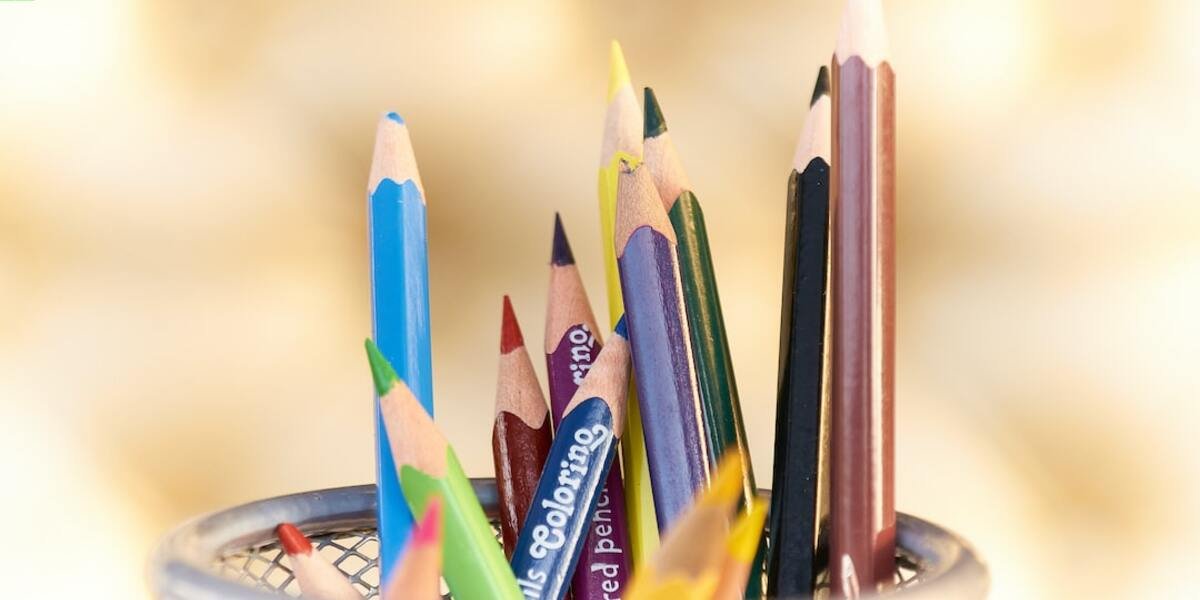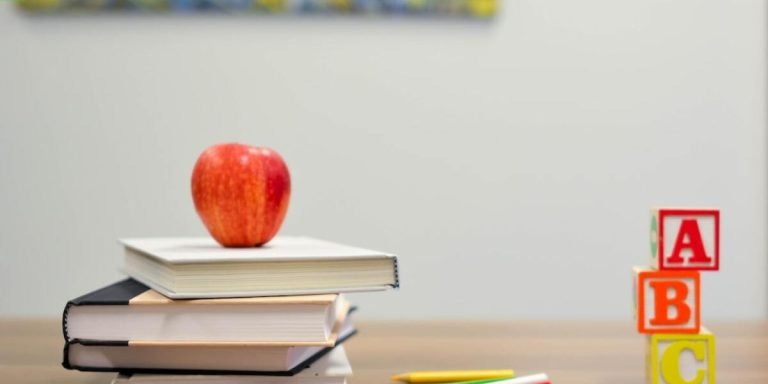PE Lesson Plans for Elementary: A Comprehensive Guide to Active Learning
The importance of physical education in the formative years is undisputed. However, curating suitable PE lesson plans for elementary students can often be challenging for educators and parents alike. Physical engagement must not only foster fitness but also improve cognitive skills, team spirit, coordination and a sense of achievement among young learners.
This comprehensive guide aims to simplify this task by showcasing effective strategies to create engaging active learning experiences via PE lessons. Whether you are an educator working on a curriculum or a parent attempting to enhance your child’s home-learning experience; these tried-and-tested methods will ensure that each aspect of childhood development is admirably addressed through well-planned activities.
Did you know?
According to research from the American Heart Association, children who participate in physical education lessons are not only more physically fit but also show significantly better academic performance compared to those who don’t.
Understanding the Basics of PE Lesson Plans for Elementary Students
Physical education (PE) lesson plans for elementary students have transformed significantly over the years, adapting to changes in societal norms and leveraging advancements in technology. What was once a primary focus on traditional sports has now become an integrated discipline combining health knowledge, physical capabilities, social skills development – all underpinned by cutting-edge tech tools.
At the heart of these PE lessons is a comprehensive understanding that today’s children are growing up surrounded by technology; it only makes sense they learn best when their educational environment mirrors this reality. The integration of digital mediums into P.E instruction not only engages students but also provides them with crucial learning opportunities relevant to today’s ever-evolving world.
Such innovative approaches tap into interactive online resources like fitness apps and virtual games designed specifically around curriculum requirements for elementary schoolers. This dynamic combination fosters improved motor skills while instilling necessary values like team spirit and fair play concurrently nurturing technological savviness amongst learners at their receptive age.
The Importance of Physical Education in Early Learning
Physical education (PE) plays a vital role in the holistic development of every child, particularly during their elementary years. Incorporating PE lesson plans for elementary students can be beneficial to early learning as it encourages physical fitness and fosters social skills.
Let’s understand the significance of Physical Education in early learning, considering its crucial role during these developing stages.
1. Builds Healthy Habits: Learning about exercise and its benefits from an early age helps children build healthy lifestyle habits. It introduces them to different types of activities that they might enjoy and wish to continue later on.
2. Enhances Motor Skills: Regular participation in structured games leads to improvements in fine motor skill coordination—these are essential requisites for writing, drawing and other craft-related tasks.
3. Promotes Mental Well-being: Studies suggest that regular physical activity reduces feelings of anxiety or depression among children while enhancing self-esteem—it also serves as an outlet for pent-up energy!
4.Explores Teamwork & Leadership Capabilities: Sports incorporated within pe lesson plans for elementary builds teamwork spirits; some may even discover latent leadership abilities through these participations.
5.Improves Cognitive Functioning : Daily exercises influence brain health positively–it improves concentration level leading kids towards better academic performance.
Notably with advancements seen globally this year 2023 integrating technology into PE lessons has been all the rage! By including elements like video tutorials or virtual reality sports simulations we make exercising fun – boosting student interaction across simultaneous digital platforms!
Key Components of an Effective Elementary PE Curriculum
A holistic PE lesson plan for elementary students should be well-thought-out and cater to the varying physical abilities, needs, and interests of young children. These are some key components that make a difference.
1. Age-appropriate Physical Activities: The core of any pe lesson plans for elementary revolves around age-appropriate activities designed to reinforce motor skills development while promoting exercise or outdoor play fun. For instance, games like ‘Simon Says’ can enforce listening skills along with movements.
2. Regular Skill Assessment: An effective strategy includes periodic assessment to gauge student progress in their fitness levels and mastery of different sports or activites embedded within the curriculum—a crucial step forward in enhancing personal growth whilst tracking overall health progression.
3. Emphasis on Safety Guidelines: It becomes paramount here because younger kids need constant reminding about safe practices during classes—be it wearing appropriate gear during specific sports/activities or understanding how best not to harm others when indulging in group tasks.
- Controlled Use of Technology: The year 2023 shows a clear trend toward integrating technology into education, necessitating its moderated use in PE sessions.
- Teachers could introduce wearable devices to monitor heart rate variations or employ virtual reality-based training modules that engage students by allowing them to explore multiple roles.
5.Increased Engagement Levels : Last but definitely an integral part– is ensuring higher engagement during these periods – whether by incorporating interactive team-building exercises; creating friendly competitions amongst peers..thus fostering camaraderie & mutual respect apart from just meeting usual fitness objectives!
Designing Engaging and Developmentally Appropriate PE Activities
In the digital age of 2023, designing engaging and developmentally appropriate PE activities is no longer confined to traditional sports. With technology’s integration in education, educators now have a myriad of innovative solutions at their disposal when constructing PE lesson plans for elementary students. The key lies in leveraging these technological tools effectively to create stimulating and suitable programs that promote not only physical health but also cognitive growth.
One prevalent technique involves incorporating educational games or apps into the curriculum. Such applications are carefully designed to foster learning-through-play by integrating academic subjects like math or science with physical activity – an ideal blend for comprehensive child development during essential elementary years. Furthermore, many of these platforms allow customization according to each student’s skill level and interests, making it possible for teachers to tailor fit lessons accordingly.
Finally yet importantly, immersive tech such as augmented reality (AR) makes its strides onto the physical education scene as one powerful asset too hard-to-ignore. Unlike textbooks or videos which offer flat perspectives, AR provides three-dimensional simulations capable of transporting children into realistic scenarios encouraging them on effective movement patterns while enhancing strategic thinking skills simultaneously – all within safe classroom confines.
So do remember next time you plan your PE lessons: Navigating through modern pedagogical terrain doesn’t always mean abandoning old methods completely; instead it entails clever blending where tradition meets innovation — all towards nurturing well-rounded youngsters ready face future challenges head-on!
Incorporating Play and Movement Skills into Lessons
In the realm of childhood education, play and movement-based activities have proved to be incredibly beneficial for elementary school learning outcomes. Incorporating these elements within lessons is not just fun for the kids but also supports their cognitive, emotional, and physical development. The key here lies in designing engaging PE lesson plans for elementary students that align with their developmental level.
Firstly, it’s critical to understand children at this age learn most effectively through hands-on experiences rather than traditional methods of teaching. It means creating an environment where they can explore freely while absorbing essential skills unknowingly—something that technology integration in education has made possible in 2023.
For instance, interactive gaming systems offer an excellent way to combine technology with physical activity meaningfully – a vital part of pe lesson plans for elementary classes today.
They’re equipped with motion sensors allowing students greater involvement while participating physically by navigating virtual worlds or mimicking dance routines – making exercises seem less tasking yet promoting active participation.
Secondly, consider introducing apps designed specifically around building motor skills like balance and hand-eye coordination.
Apps such as “GoNoodle” provide short bursts of desk-side physical activities including ‘run on spot’ challenges or ‘copy-the-movement.’ Not only do these create super-engaging breaks between more academically-focused lessons but are also perfect tools aiding concentration improvement whilst reinforcing concepts learned during class work concurrently!
Speaking from a broader perspective blending technology into existing curriculums significantly enhances student engagement levels without compromising educational goals when done right!
Adapting Sports and Games for Younger Children
Educating our youngsters has been incredibly transformed with the integration of technology. As a significant part of their learning routine, Physical Education (PE) needs to keep up-to-date as well. Therefore, incorporating PE lesson plans for elementary that effortlessly blend fun and fitness is crucial.
Adapting sports and games for younger children requires an intricate understanding of child development stages while maintaining engagement value. Selecting age-appropriate activities not only ensures safety but also boosts active participation and interest among students.
For instance, traditional team sports like soccer or baseball can be simplified by reducing the field’s size or adapting rules according to comprehension levels. This strategy still helps fulfill your curriculum objectives without overwhelming young students with complex game dynamics they may find challenging to follow.
Next in line are computer-assisted physical tasks which give a tech touch to conventional PE lessons making them more engaging in 2023 than ever before! Augmented Reality(AR)-focused exergames where kids jump around pop-up images projected on screens offer quite an exhilarating experience during regular class hours!
Moreover, playing digital dance rhythm games such as Just Dance Kids version help improve gross motor skills through joyous foot-tapping sessions full-on aerobic workouts! Collaborative multiplayer VR-based exercises ensure both body movement coordination along with fostering teamwork spirit even though physically distanced due to pandemic times constraints occasionally faced this year.
Assessment Strategies in Elementary Physical Education
In this era of technology-fueled education, assessing elementary Physical Education (PE) requires innovative strategies to track and enhance student progress effectively. One strategic approach is incorporating PE lesson plans for elementary students that integrate advanced tech-tools into their day-to-day activities. This systematic integration in 2023 ensures the objectives are met while facilitating a comprehensive understanding of physical fitness.
The use of digital assessment tools like heart rate monitors, step counters or agility apps can make evaluation much more holistic and engaging. These tools allow educators to assess not just performance but also improvements across time – tracking stamina enhancements, coordination development or flexibility increases with straightforward metrics rather than subjective observation alone.
Moreover, embracing virtual reality for simulative exercise games provides an immersive experience that promotes active learning and makes lessons excitingly interactive for young learners. From skill acquisition to knowledge comprehension — using these technological advancements amalgamates fun with fundamental learnings ensuring long-term retention which is pivotal within today’s context of Elementary School Learning.
Thus by embedding modern technologies within traditional models—assessment in Elementary level Physical Education becomes inclusive, diversified yet precise—ensuring every child’s unique needs are attended fulfilling the true essence of childhood educational advancement.
Measuring Student Progress Through Formative Assessments
In tracking the advancement of students’ skill sets and understanding in elementary physical education, formative assessments play an integral role. When integrated into pe lesson plans for elementary schools, these evaluations help teachers measure student progress continuously. They allow educators to adapt their teaching methods according to each child’s learning pace.
Formative assessments provide a structured way for monitoring growth over time with considerable flexibility. For example, they can incorporate technology options such as fitness trackers or health apps that often appeal to young learners in 2023’s digital era.
Furthermore, implementing quizzes digitally through mobile applications introduces an interactive element. It keeps track of student’s performance while making it fun and appealing at the same time! This integration leverages modern tools effectively within our educational systems keeping up-to-date with technological advancements.
Another potent tool to trace improvement is self-evaluation encouraged amongst students themselves through tech interfaces or paper-based questionnaires after completing tasks during PE sessions. Such engagement aids children understand their own capabilities better and discover areas where improvement may be necessary.
Also critically important are peer reviews which involve fellow pupils providing constructive feedback on one another’s performances using specific criteria defined by instructors beforehand—aiding the overall development process holistically!
Utilizing Observational Techniques to Gauge Skill Development
Observational techniques play a critical role in assessing student performance, particularly in elementary physical education (PE). They offer hands-on insights into the learners’ abilities and areas that require fortification. Many PE instructors implement observational strategies alongside effective pe lesson plans for elementary to ensure comprehensive skill development.
One prevalent technique is direct observation during PE classes. Herein, teachers focus on various attributes such as how well students follow instructions, their overall movements sequence coordination, or even as simple yet significant aspects like teamwork and attitude towards peers. Observation allows teachers to identify challenges first-hand and quickly adapt their teaching methodology accordingly.
Another advantageous strategy involves video recording of the activities executed within PE lessons. The use of technology has magnified this method’s effectiveness several folds since it provides an opportunity for repeated viewing at convenience throughout 2023 onwards – crucial when dealing with large classes where individual attention may be limited during live sessions.
Yet another powerful tool to gauge performance comes embedded within games-based learning methods included in pe lesson plans for elementary children themselves — demonstrating progress tangibly via scoring systems incorporated into fun exercises can motivate young learners immensely while subtly providing valuable assessment data too!
Conclusion
In sum, PE lesson plans for elementary students provide a wonderful medium to foster active learning and holistic development. Equally important is the role you play – as parents or educators- in crafting these effective lessons that engage their bodies, minds, and spirits thrivingly. Remember each child’s journey towards an active lifestyle begins with one fun-filled session at a time.
Don’t let your quest for knowledge stop here; our website is teeming with resources on childhood education tailored just for you! Be it valuable insights from fellow parents or innovative teaching approaches tried-and-tested by seasoned educators – it’s all within reach when browsing through our content cache. So go ahead, dive into this shared pool of wisdom because nurturing tomorrow starts today.







